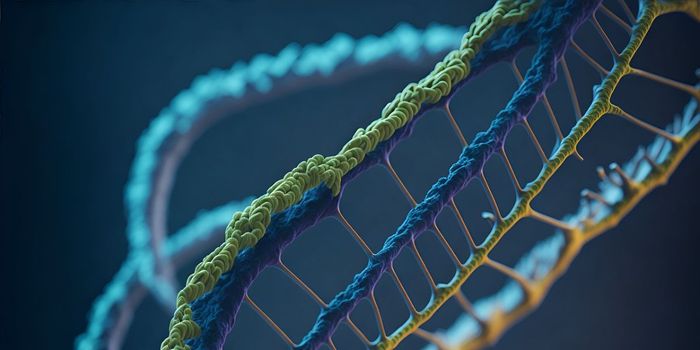New DNA-Cutting Enzymes are Widespread in Nature & Work on Human Cells
There are many health problems that can be traced back to errors in the genetic code. There are also many potential benefits to genetic engineering outside of healthcare. Nature has already found ways to manipulate the genetic code, and scientists have been harnessing those methods so we can use them to our benefit. CRISPR is one example; it is a genetic engineering tool that has origins in bacteria's defense against viral attacks. This tool uses Cas enzymes that make cuts to DNA. Other molecules known as RNA guides are used in CRISPR/Cas direct the tool to locations in the genome that can be specificied by scientists.
Scientists have recently found that a wide array of animals make their own DNA cutting enzymes known as Fanzors. Fanzor enzymes can be directed by RNA guides, like CRISPR, and could be used in similar ways. These are the first DNA-cutting enzymes that work with an RNA guide to be found in eukaryotes. While hundreds of Fanzors had been found in the past year or so, now there are over 3,600 in five families. The work has been reported in Science Advances.
“People have been searching for interesting tools in prokaryotic systems for a long time, and I think that that has been incredibly fruitful,” said co-corresponding study co-author and MIT McGovern Fellow Jonathan Gootenberg. “Eukaryotic systems are really just a whole new kind of playground to work in.”
These eukaryotic enzymes might be much safer for use in other eukaryotes, like humans, noted the researchers. While scientists have optimized Fanzor enzymes for use in human cells, the study showed that they can be used to target human DNA sequences without any engineering.
“The fact that they work quite efficiently in mammalian cells was really fantastic to see,” noted Gootenberg.
Additional work indicated that Fanzors have an evolutionary link to bacterial enzymes called TnpBs, which also cut DNA. These bacterial originators of Fanzors seem to have gotten into human cells multiple times, sometimes with the help of viruses and at other times through bacterial symbionts. Once eukaryotic cells took up these enzymes, they adapted to their new home and began to use signals in those cells, including one that gave them access to DNA in the nucleus.
The active site on the Fanzor enzymes that cuts DNA also evolved, and is different from those found on bacterial enzymes. This change also made Fanzors more specific when cutting DNA, and less likely to make unintended cuts.
When the researchers guided the Fanzor enzyme to a specific genomic site in human cells, Fanzors cut the targets with 10 to 20 percent efficiency.
The researchers are hopeful that Fanzors will lead to the development of a variety of powerful genome editing tools. “It’s a new platform, and they have many capabilities,” said Gootenberg.
“Opening up the whole eukaryotic world to these types of RNA-guided systems is going to give us a lot to work on,” said co-corresponding study author and MIT McGovern Fellow Omar Abudayyeh.
Sources: Massachusetts Institute of Technology (MIT), Science Advances









